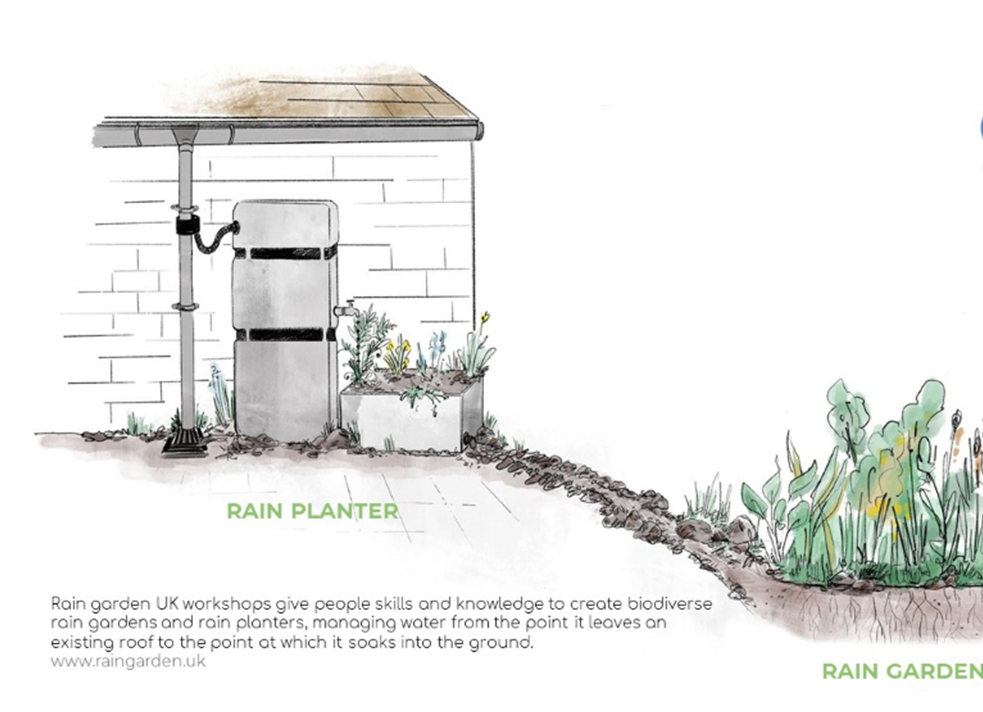

Tower and Town, October 2022 (view the full edition) (view the full edition)Rain Gardens!The long hot summer of 2022 may be a taste of what's to come as the impact of climate change plays out. Rainfall that arrives in heavy storms with long dry periods in between is difficult to manage, threatening to keep us yo-yoing from drought to flood, which is bad news for rivers like the Kennet and bad news for gardeners. To live happily with changing rainfall patterns, we all need to make changes, and our gardens are a good place to start. What is a rain garden A 'Rain garden' is a planted depression in the ground that harnesses the power of soil and plants to capture rain, filter out pollution and then let the water soak slowly into the ground. Some rain gardens include rain water planters, which are specially designed planters that contain a reservoir to store rain water before slowly releasing it back to the drainage network or to the ground. Finally, a good rain garden will include some sort of water butt to hold on to rain so it's available for dry spells.  Figure 1 - Elements that make up a rain garden. You can choose one or all of them, depending what suits you. Rain gardens do four things:
A rain garden created by disconnecting a downpipe and sending the roof runoff to a planted depression is a simple, low budget project achievable in a weekend with a bit of planning. There are some basic rules to follow and ARK's Rain Garden UK training courses give you everything you need to know. If you can't wait until the next course there is plenty of guidance and advice on the internet, we have listed some of our favourite resources here: https://www.kennetcatchment.org/kennet-rainscapes/ ARK has been working with homeowners around Wiltshire and beyond through our Rain Garden UK training, which we developed with Ramsbury based garden designer Wendy Allen. The next courses will be in the autumn. Exact dates are not set yet, but you can pre-register your interest by emailing julie@riverkennet.org or take a look at www.raingarden.uk Perversely, rain gardens spend most of the time dry, only holding water for a few hours after a storm, so plants need to be drought tolerant but able to put up with periodic inundation. As part of Rain Garden UK training we've put together a list of tried and tested plants. But some examples you can try include Geum 'Totally tangerine' for sunny sites, or a good one for a shady spot try Liriope muscari. If you'd like to see rain gardens ARK has built in local schools, designed for us by Wendy, there are some fine examples at Preshute, Ramsbury, Aldbourne, Shalbourne, Baydon and Chilton Foliat Primary Schools. All of them manage rain water and have some good ideas to copy at home.  Charlotte Hitchmough, ARK Director |